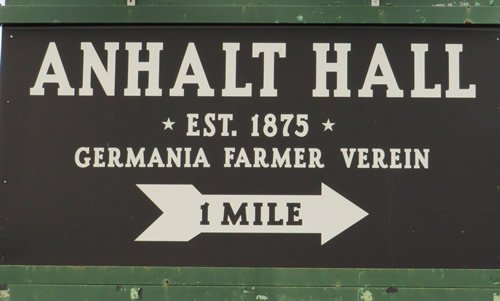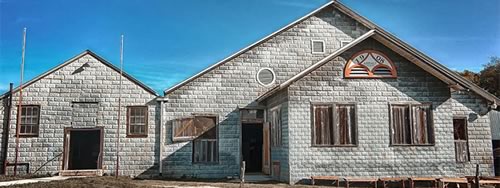Anhalt, Texas - A Stopping Place. (original) (raw)
Books by
Michael Barr
Order Here:
The town of Anhalt began as a way station along 50 miles of bad road between New Braunfels and Boerne. It was a place for bone-tired travelers and swearing teamsters to stretch their legs, wet their whistles and rest their numb and battered keisters after several grueling hours of intimate contact with a hard and bouncy wagon seat.
Actually calling Anhalt a town is a stretch. It's more of an area, hidden away in the hills of western Comal County, about a mile off Texas 46, just west of U.S. 281.
Anhalt dates to 1859, close on the heels of New Braunfels and Fredericksburg.
The Krause family had a house and a store there in the 1860s. Back then locals called it Krause's Settlement.
In 1875, 35 local men met at Krause's Settlement and founded a Stock Raising Club to fight cattle rustlers. Club members marked their livestock by branding a "G" on the left shoulder in addition to their individual brands.
The following year the Stock Raising Club changed its name to the Germania Farmer Verein. Members broadened the scope of their activities to include the study of improved farming methods.
The Germans looked out for each other, and they had a knack for organizing. In the 1870s about a hundred farming families around Krause's Settlement began pooling some of their money to help each other during emergencies - a sort of mutual insurance fund.
Then in 1879 Krause's Settlement got a post office and a name change. The place officially became Anhalt - a German word that means "stopping place."
Settlers may have chosen the name because it fit the situation, or the name may have come from the Duchy of Anhalt in Germany.

Anhalt Hall
Germania Farmer Verein sign
Photo courtesy Michael Barr, November 2021
The Germania Farmer Verein met regularly at Anhalt Hall, a wooden structure built in a live oak clearing. Then someone had a brilliant idea. Since members were getting together anyway, why not throw a party at the same time?
Around 1880 Anhalt Hall hosted the first spring festival (Maifest) to celebrate the end of planting season. That party was so much fun, the Verein threw a harvest festival (Erntenfest) in October to celebrate the end of harvest season.
Farm families lived isolated, lonely lives, so they jumped at the chance to socialize with neighbors, shake a leg on the dance floor and blow some foam off a brew.
They came from miles around, camped out for the weekend on the grounds of Anhalt Hall, cooked over a campfire and slept under the stars. They brought their own instruments and made their own music.
As years passed the celebrations grew. The fall festival became a fair where farmers showed off their fruits and vegetables. Cattle raisers brought their prized livestock. Wives brought preserves and pickles.
The Germania Farmer Verein and the annual festivals at Anhalt Hall held the community together.
Anhalt Dance Hall
Photo courtesy Anhalt Hall
In 1887 the Verein built a larger hall. The current hall, still in regular use, dates to 1908.
Tradition is paramount at Anhalt, but over the years the Verein has reluctantly made a few concessions to the modern world. Members built, in order of importance, a beer garten (1951) and a kitchen (1953).
More recent festivals provided a family-style meal at noon featuring pot roast, sauerkraut and all the trimmings.
There was something for everyone at the spring and fall festivals. For the sporting crowd there was a double-elimination horseshoe tournament.
If you scoff at the notion that pitching horseshoes is an athletic event, try tossing a ringer with one hand without spilling your beer in the other.
Today Highway 46 is smooth as a countertop. Travel time between New Braunfels and Boerne is less than an hour and easy on the backside.
The landscape around Anhalt is changing too. Housing developments, fast food joints and strip malls of suburban San Antonio are just down the road and getting closer by the minute.
But while tomorrow closes in, Anhalt clings to yesterday like a June bug to a screen door.
